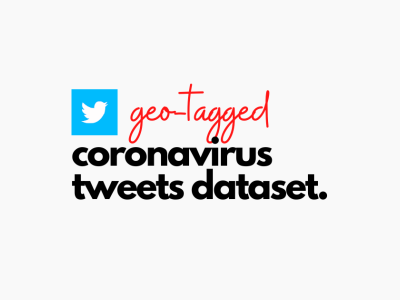A 2022 Television White Space Geolocation Database of the Greater Manila Area of the Philippines

- Citation Author(s):
-
Vladimir Ocampo (De La Salle University)
- Submitted by:
- Vladimir Ocampo
- Last updated:
- DOI:
- 10.55549/epstem.1224555
- Data Format:
- Research Article Link:
 84 views
84 views
- Categories:
- Keywords:
Abstract
This dataset serves as the Geolocation Database for TV White Space. The dataset contains channel information and availability data. The channel information has the following columns: CHANNEL, COMPANY_NAME, DIGITAL, CALLSIGN, LATITUDE, LONGITUDE, LOWER_BAND, UPPER_BAND, TX_FREQ, ERP, TX_PWR. CHANNEL refers to the channel used, expressed in CH + channel number. COMPANY_NAME is the company name of the primary user. DIGITAL has a value of 1 when it use a digital transmission, otherwise it has a value of 0. CALLSIGN is the callsign of the primary user. LATITUDE and LONGITUDE tells the latitude and longitude of the transmitter in degrees North, since Greater Manila Area lies completely in the northern hemisphere. LOWER_BAND and UPPER_BAND are the lower and upper band frequencies, respectively in Megahertz (MHz). TX_FREQ is the transmission frequency in MHz. ERP refers to the Effective Radiated Power of the transmitter in kilowatts (kW) and TX_PWR is the transmission power in kW.
The channel availability data contains the columns DAY, TIME, and the availabilities of the channels. The DAY contains the days of the week. The TIME represents the time of the day in 24-hour hh:mm format. The channel availability columns are named the same way as the channels in the channel information (CH + channel number). For instance, the column CH4 gives the availability of Channel 4. The availability has a value of 1 when it is available (off-air) or 0 when it is not available (broadcasting).
The data on channel information and channel availability are obtained from online sources and to the best knowledge of the researchers gathering the data. In addition, the database can be updated.
Instructions:
This dataset serves as the Geolocation Database for TV White Space.
In using this dataset, please use the citation below.
Ocampo, V. C. and Materum, L. Wireless Channel Availability Forecasting with a Sparse Geolocation Spectrum Database by Penalty-Regularization Logistic Models. The Eurasia Proceedings of Science, Technology, Engineering and Mathematics.
The dataset contains channel information and availability data. The channel information has the following columns: CHANNEL, COMPANY_NAME, DIGITAL, CALLSIGN, LATITUDE, LONGITUDE, LOWER_BAND, UPPER_BAND, TX_FREQ, ERP, TX_PWR. CHANNEL refers to the channel used, expressed in CH + channel number. COMPANY_NAME is the company name of the primary user. DIGITAL has a value of 1 when it use a digital transmission, otherwise it has a value of 0. CALLSIGN is the callsign of the primary user. LATITUDE and LONGITUDE tells the latitude and longitude of the transmitter in degrees North, since Greater Manila Area lies completely in the northern hemisphere. LOWER_BAND and UPPER_BAND are the lower and upper band frequencies, respectively in Megahertz (MHz). TX_FREQ is the transmission frequency in MHz. ERP refers to the Effective Radiated Power of the transmitter in kilowatts (kW) and TX_PWR is the transmission power in kW.
The channel availability data contains the columns DAY, TIME, and the availabilities of the channels. The DAY contains the days of the week. The TIME represents the time of the day in 24-hour hh:mm format. The channel availability columns are named the same way as the channels in the channel information (CH + channel number). For instance, the column CH4 gives the availability of Channel 4. The availability has a value of 1 when it is available (off-air) or 0 when it is not available (broadcasting).
The data on channel information and channel availability are obtained from online sources and to the best knowledge of the researchers gathering the data. In addition, the database can be updated.
Designations used by companies to distinguish their products are often claimed as trademarks. All brand names and product names used in any component of these datasets/codes are trade names, service marks, trademarks or registered trademarks of their respective owners. The author(s)/publisher(s)/authorizing body is/are not associated with any product or vendor mentioned in any component of these datasets/codes.
The inclusion of an organization name, product, or service in any part of these datasets/codes should not be construed as an endorsement of such organization, product, or service, nor is failure to include an organization name, product, or service to be construed as disapproval.
Any component or publication of these datasets/codes is designed to provide accurate and authoritative information in regard to the subject matter covered. Every attempt has been made to ensure accuracy at the time of publication. Any component or publication of these datasets/codes is made on the understanding that the author(s)/publisher(s)/authorizing body is not engaged in rendering professional services. If professional advice or other expert assistance is required, the services of a competent professional should be sought.
Any statements expressed in any component or publication of these datasets/codes are those of the individual authors and do not necessarily represent the views of the authors' affiliations, which takes no responsibility for any statement made herein. No reference made in this publication to any specific method, product, process, or service constitutes or implies an endorsement, recommendation, or warranty thereof by the authors' affiliations. The materials are for general information only and do not represent a standard of the authors' affiliations, nor are they intended as a reference in applicable specifications, contracts, regulations, statutes, or any other legal document. The authors' affiliations makes no representation or warranty of any kind, whether express or implied, concerning the accuracy, completeness, suitability, or utility of any information, apparatus, product, or process discussed in this publication, and assumes no liability therefor. The information contained in these materials should not be used without first securing competent advice with respect to its suitability for any general or specific application. Anyone utilizing such information assumes all liability arising from such use, including but not limited to infringement of any patent or patents.







